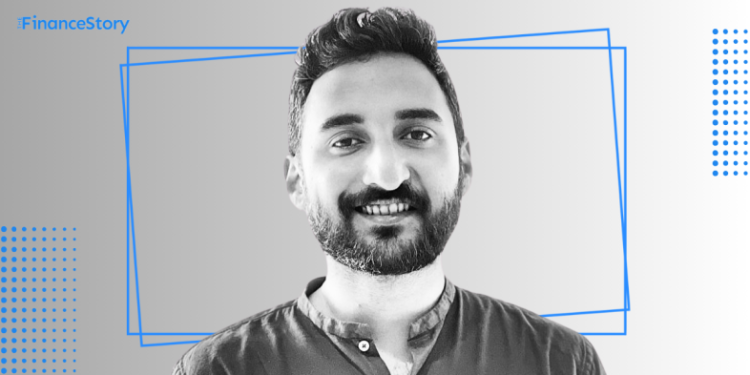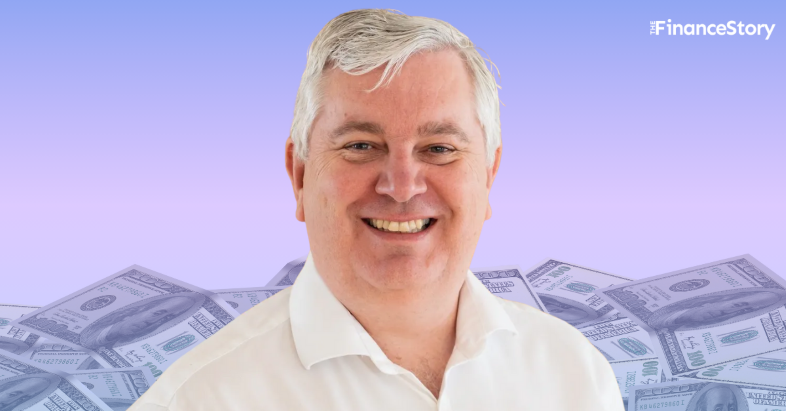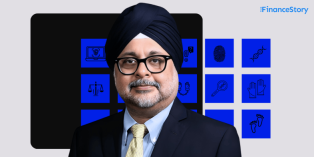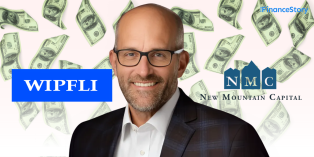- Hi, I am Rohit Krishna. Back in 2011, I had one goal: to break into the PE/VC world.
- With only a handful of funds in India, it was an uphill climb.
- Fast forward to 2017 – we launched WEH Ventures with our Fund 1 of ₹20 Crores.
- By 2020, we raised Fund 2 at ₹100 Crores, with me stepping into the role of General Partner.
- Want to make it in VC?
Getting into a career in the VC space as a CA
I qualified as a Chartered Accountant in 2011, driven by a clear goal: to break into the world of private equity or venture capital.
However, at that time, only a few funds existed in India. Many told me I was too young and needed to learn the basics first. So, that’s what I did.
I joined Moody’s as a research analyst, evaluating around 100-150 companies across traditional sectors like oil and gas, manufacturing, and trading (FYI, zero tech companies!).
It turned out to be a great opportunity, as I got to interact with a lot of founders and CEOs and learn how they ran their businesses.
After that, I earned my CFA which strengthened my path forward.
Subsequently, I transitioned to public markets on the sell side with Spark Capital – We advised mutual funds and asset management firms regarding potential opportunities and strategic approaches.
I got the opportunity to interact with investors and understand their investment thesis.
It was here that I met Deepak Gupta, (Now General Partner at WEH Ventures) who was working at Intel Capital, focused on Growth Investing in India.
After several discussions, we identified a shared interest; startups and VC space.
While we did not set a specific timeline, it was certain that we wanted to establish an early-stage fund at some point.
For now, we decided to help startups raise capital and provide advisory services – Equity Crest, a curated startup funding platform. I joined Deepak as an Analyst in 2015.
That is when we discovered Pratilipi, an Indian online self-publishing and audiobook portal headquartered in Bangalore.
Pratilipi, went on to raise USD 40 Million…It was clear that we had a knack for identifying promising companies.
Launching our first fund
In 2017, just a year after starting our Advisory business, we decided to go all out and launch the fund, and WEH Ventures was born.
We raised INR 20 Crore for this fund.
- Our first big bet was on Pratilipi
- Next, we invested in Smallcase, a top provider of investment products. Just six months later, Sequoia (now Peak XV) invested in Smallcase.
- Due to the small size of our fund, we could only invest in 9 startups. Despite that, the fund performed well.
In 2020, we announced our Fund 2 – ₹100 Crore, keeping the same strategy: investing in pre-seed and seed stages, helping companies through Series A and Series B, and supporting their growth.
Going from raising ₹20 crores to ₹100 crores was a different experience altogether.
Raising for our Fund 1 wasn’t easy. After all, your portfolio is not built out at all. It’s entirely blind investing.
But after the first close, with a few portfolio companies on board, they can assess the portfolio and see the value firsthand. That’s why the final close is always much easier than the first.
Ticket size
- Our average ticket size is now $500,000.
- We lead pre-seed and seed rounds, and we can invest up to $1.5 million in each company as they progress through Series A and Series B
Also read: Former Kedaara controller on PE / VC rise and opportunities for Fractional CFOs and CA firms
How do we raise funds for our VC
Our outreach strategy is deeply rooted in leveraging personal networks.
- For a Category 1 or Category 2 Fund, the minimum investment a Limited Partner (LP) has to make is ₹1 crore, usually drawn over 4 to 5 years.
- So, someone needs to have the capacity to invest ₹20-25 lakhs per year.
- That’s a pretty broad requirement. Also, since the money is not liquid, you need to build a lot of trust with LPs to even get things moving.
- It’s a meticulous process.
For both Fund 1 and Fund 2, we have never used brokers or external parties to raise the funds.
We mainly source capital from HNIs including CXOs who are well-compensated.
Everyone who invested in Fund 1 was someone we had known personally for a few years. When we launched the fund, they wrote smaller checks to gauge our performance.
After a successful first close, they began recommending us to their networks.
From there, it grew organically.
We’re still learning.
Targeting LPs in smaller cities
- We often connect with potential LPs in smaller cities such as Karur, Coimbatore, and Gandhidham, while also engaging with familiar hubs like Jaipur.
- This approach allows us to tap into new LPs who other funds may not as frequently approach.
Targeting major cities with differentiated pitch
- In larger cities like Mumbai, Delhi, and Bangalore, LPs typically have a foundational understanding of startups and tech investments.
- Here, our focus is on differentiating ourselves from the competition and emphasizing what makes us stand out in the market.
Building trust with LPs
- Building trust with LPs takes time. On average, it requires four to five meetings before potential LPs feel confident in investing.
- These interactions help us establish credibility in three key areas: ourselves as fund managers, the asset class we’re investing in, and our fund’s specific strategy.
Utilizing benchmarking reports for transparency
- To further bolster trust, we provide benchmarking reports from recognized organizations such as NSE and CRISIL.
- These reports give LPs clear, data-backed insights into fund performance, helping them feel more secure in their decision-making process.
Selective outreach for higher conversion
- Over the last eight years, we’ve refined our pitching strategy by focusing on LPs whose interests and values align with our fund’s vision.
- This targeted approach has significantly boosted our conversion rate, reaching an impressive 50-60%, especially with LPs interested in long-term collaborations.
Making investment decisions
We focus on both the founders and the product.
Product
If something is not unique and it’s a me-too kind of product, we usually don’t invest.
Even at the pre-seed stage, we don’t usually invest without a product sort of prototype in place so that we get to understand, if is it unique at all.
Founder
I used to lean more towards the product, but I have learned that the founders matter even more.
Even if the product and sector are right, backing the wrong founding team can lock your investment for years with no way out.
Also read: Considering a Career in a VC Firm? Demands unwavering commitment and relentless hard work.
Internal Rate of Return (IRR)
For our funds, the IRR is way above the standard:
- Fund 1: Approx 27-28%. We raised ₹20 crores and have already returned this capital to investors. Profits are anticipated over the next 18-24 months.
- Fund 2: Approx 39-40%, though exits are yet to start, as we recently completed the portfolio build-out.
Exits generally begin around the 6th year, so the current IRR reflects the last external investment round valuation.
Sectors we invest in
Our average ticket size is now $500,000. We lead pre-seed and Seed rounds, with the ability to invest up to $1.5 million per company.
And although we are sector agnostic:
Consumer Tech and Consumer Brands
- About 65-70% of our portfolio centers on consumer-related businesses, divided into two main categories: consumer tech and consumer brands.
- Within consumer tech: fintech and content are 2 sort of subsectors where we are a bit more active.
Emerging Sectors
- B2B Marketplaces, Robotics, SaaS, and Healthcare
- These sectors are emerging areas for us, where we’re still evaluating effective strategies.
- For instance, in robotics, we tend to invest at a later stage, as it’s more challenging to identify successful models at the pre-seed level.
Unique to India Local Models
- Noticed India-specific concepts, with limited or no global counterparts.
- We understand global ecosystems – from China to Europe to the US. What’s exciting now is that, in the last 2-3 years, we’re not seeing any copycat models anymore.
- Our portfolio company, Sri Mandir, exemplifies this shift, as it creates spirituality-focused apps tailored to the Indian market.
How do we find newer sectors and spaces?
We read a lot.
Best sectors in VC, in 2024
Accounting Advisory
- I am particularly excited about service-oriented businesses with a significant human element, and accounting advisory exemplifies this well.
Fintech
- We believe fintech firms, whose profit margins traditionally ranged from 20-30%, could now see margins of 60-70%, due to substantial productivity gains.
- With advancements like AI, it’s possible to achieve much more with fewer people.
- Despite that, fintech is a challenging sector to invest in.
- We have invested in only 3 to 4 fintech companies across both funds and have entirely avoided lending companies.
- Why? Lending companies need a lot of equity to build their book and the balance sheet. Therefore, as an early investor, you keep getting diluted a lot. The second is regulation. It’s very, very unpredictable. It always was. It’s probably even more right now.
- Third, it is very hard to figure out whether someone’s lending processes and acumen are going to be right or wrong.
IT Services and Software Development
- IT services and software development, due to the rapid advancements in AI over the last 6 to 9 months.
AI
- Recently, we invested in a healthcare AI company aimed at boosting doctors’ productivity. What’s notable is that monetization has been remarkably quick.
- Where most SaaS or software companies struggle to hit $100k ARR even after raising seed rounds, this bootstrapped company, only five months old, has already achieved ₹1 crore in ARR.
Insurance Focus
- We invested in Mitigata, a cyber-risk-focused insurance broker with aspirations to evolve into an insurance company dedicated solely to cyber risk.
CFO Stack
- There is significant complexity around GST and other developments in India that one can look into to improve.
- Treasury management is one example – many companies, even SMEs and larger enterprises, still rely on Fixed Deposits and aren’t optimizing their cash utilization. I believe tech-driven platforms could address needs in treasury, cash management, or working capital management.
Companies of all sizes are struggling with these issues, and this is an area we are keen to invest in.
How to make inroads in a Venture Capital firm
Specialized service providers for startups
- To assist our portfolio startups in the area of accounting, legal, and design services we collaborate with trusted partners.
- These partnerships work well for pre-seed and seed-stage companies, which typically prefer outsourcing these functions rather than managing them internally.
Leverage advisory experience
- The advisory business became an ideal “soft landing,” allowing us to gauge our strengths in this space.
- Entering early-stage VC from a different field can be challenging. A strong network or trusted relationships with LPs in another capacity can be helpful.
Join startups in finance roles
- Joining a startup as a finance head could be an interesting way to transition into VC.
- For example, some founders were early finance employees at companies like Swiggy. Not only did they earn well, but they gained valuable insights from observing Swiggy’s growth from 2015 to 2019.
Skills required for a General Partner?
Sales is essential for this role. I didn’t realize how much I needed it because we often view this as a buy-side endeavour.
I was terrible at sales and probably still am. But I have gotten better.
People have different sales styles. Some people are very aggressive in their approach, while others are more genuine, openly acknowledging uncertainties and risks for various reasons.
We tend to fall into the latter category.
Wrapping up
It’s much easier now to enter the VC space than it was in 2015. There are more funds, and starting your fund is far more accessible now than it used to be.
But, yes, these would be my two points,
- Fund investing is not as glamorous as it seems from the outside. It’s incredibly challenging due to its illiquidity, and you won’t know if you’re good at it until a startup succeeds
- Probably the startups, are a much better place to be than a fund.
The feedback loop is slow in Fund investing, perhaps the slowest of any industry I have encountered. So, if you’re comfortable with this and are confident in your abilities, then by all means, pursue it.














